Abstract
OBJECTIVE: To break the link between drug use and the human immunodeficiency virus (HIV), in 1992 the state of Connecticut rescinded a 14-year ban on pharmacy sales of syringes without a physician's prescription. In 1993, the Center for Disease Control and Prevention (CDC) evaluated the impact of the new legislation on access to syringes among injecting drug users (IDUs) and found an initial pattern of expanded access. However, it also found that some pharmacies, after negative experiences with IDU customers, reverted to requiring a prescription. This chapter reports findings from a four-year follow-up study of current IDU access to over-the-counter (OTC) pharmacy syringes in Hartford, Connecticut. METHODS: Through structured interviews, brief telephone interviews, and mailed surveys, data on nonprescription syringe sale practices were collected on 27 pharmacies, including 18 of the 21 pharmacies in Hartford and none from pharmacies in contiguous towns, during June and July 1997. Interview data on pharmacy syringe purchase from two sample of IDUs, a group of out-of-treatment injectors recruited through street outreach, and a sample of users of the Hartford Needle Exchange Program, also are reported. RESULTS: The study found that, while market trends as well as negative experiences have further limited pharmacy availability of nonprescription syringes, pharmacies remain an important source of sterile syringes for IDUs. However, the distribution of access in not even; in some areas of the city it is much easier to purchase nonprescription syringes than in other. All of the seven pharmacies located on the north end of Hartford reported that they had a policy of selling OTC syringes, whereas only six (54.5%) of the II pharmacies located on the south end have such a policy. Overt racial discrimination was not found to be a barrier to OTC access to syringes. CONCLUSIONS: To further decrease acquired immunodeficiency syndrome (AIDS) risk among IDUs, there is a need for public education to counter empirically unsupported stereotypes about IDUs that diminish their access to health care and AIDS prevention resources and services. In states or cities where pharmacy sale of nonprescription syringes is illegal, policy makers should examine the benefits of removing existing barriers to sterile syringe acquisition. In cases in which pharmacy sale of nonprescription syringes is legal, local health departments should implement educational programs to inform pharmacy staff and management about the critically important role low-cost (or cost-free), sterile syringe access can play in HIV prevention.
Full text
PDF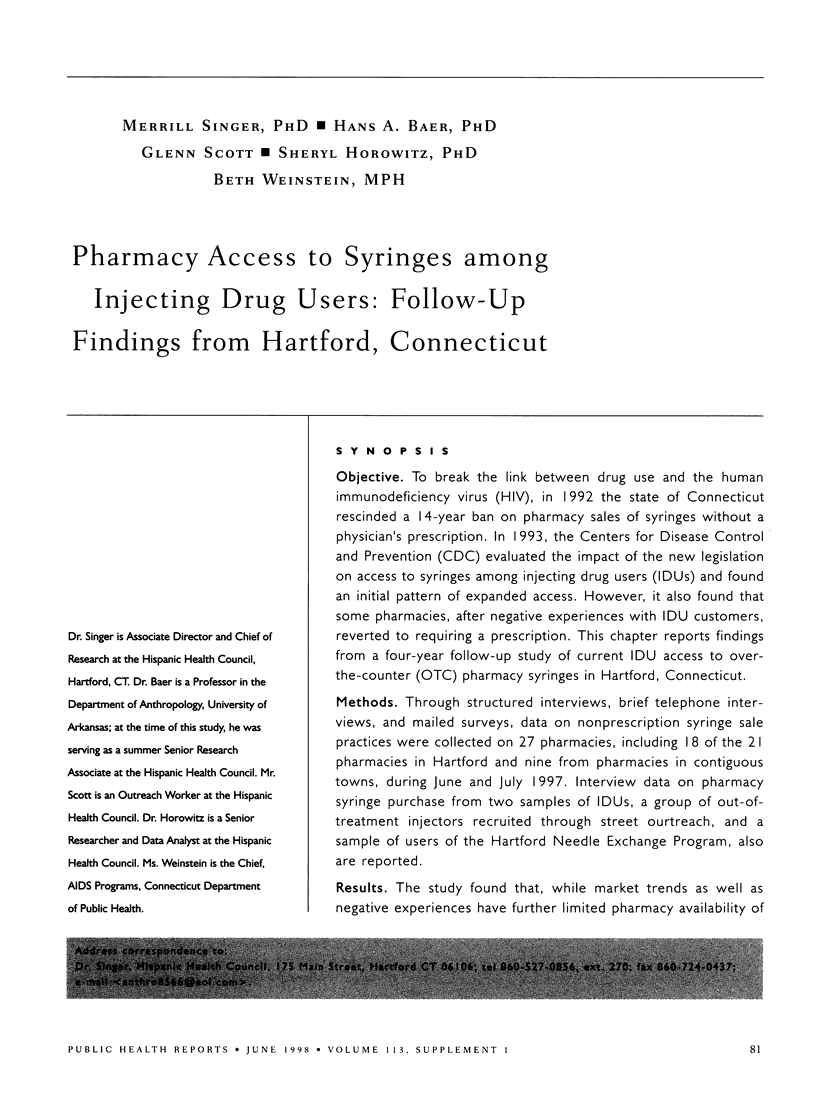
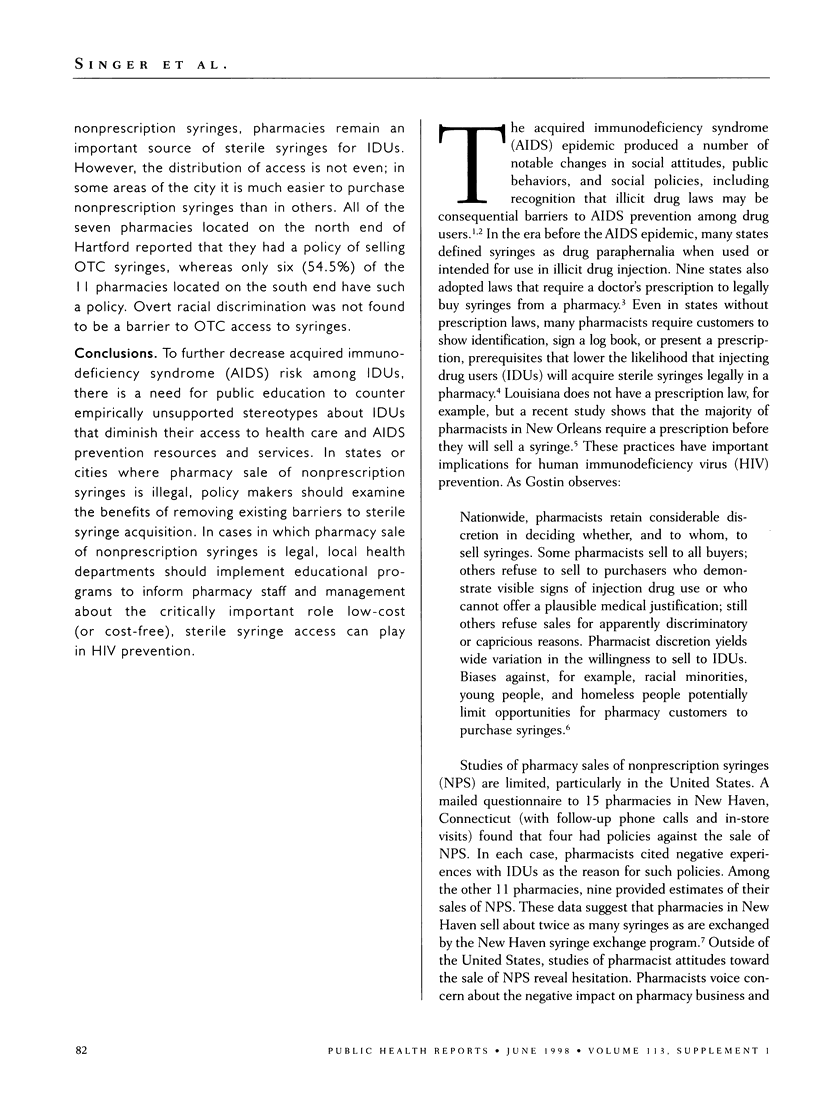
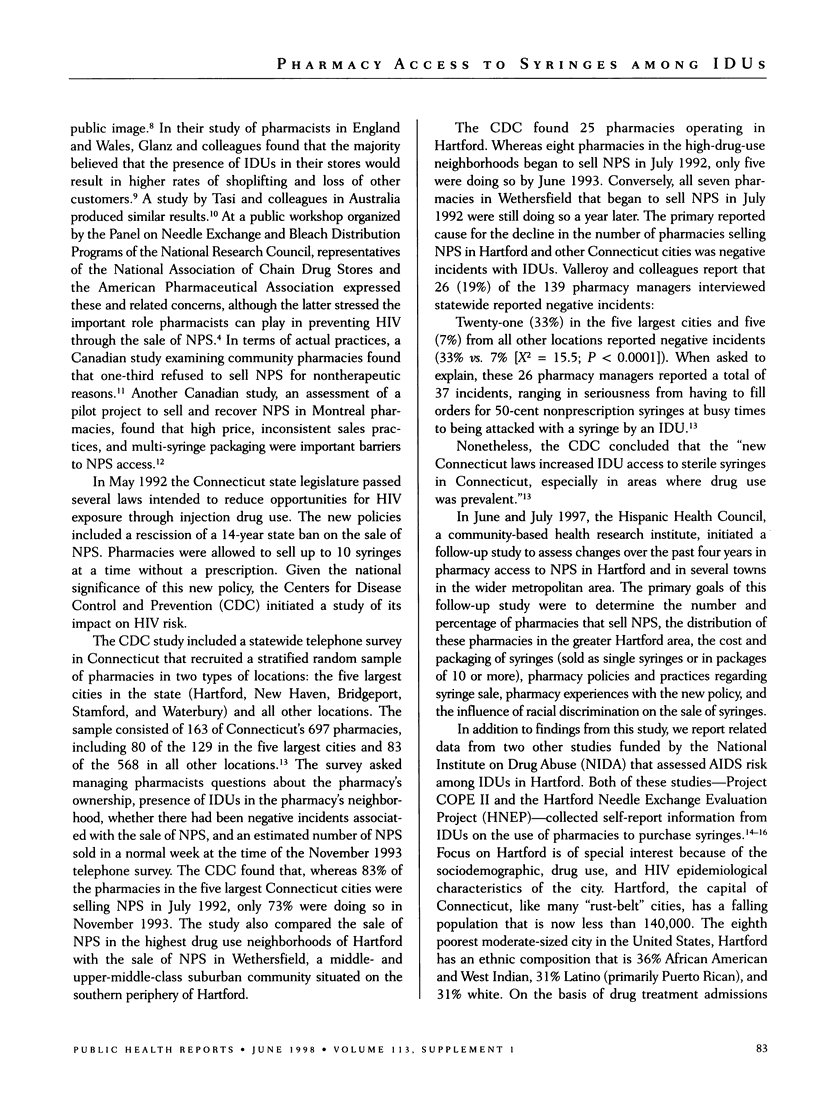
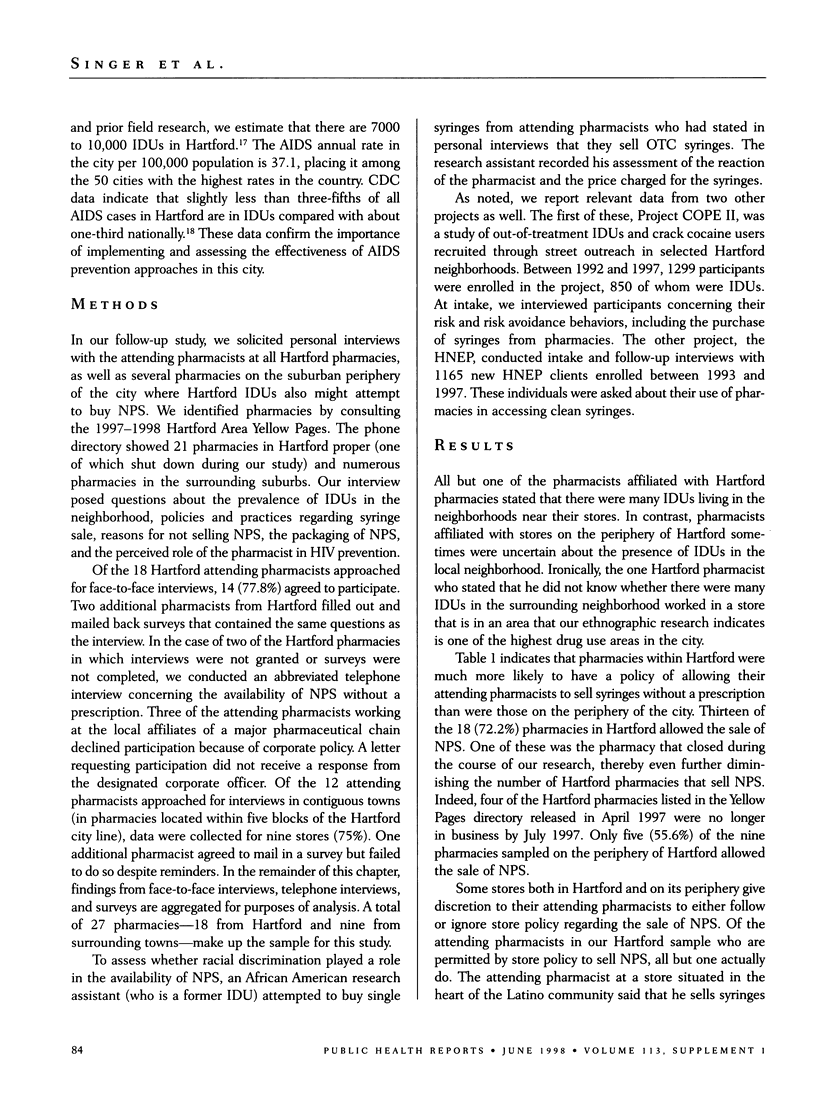
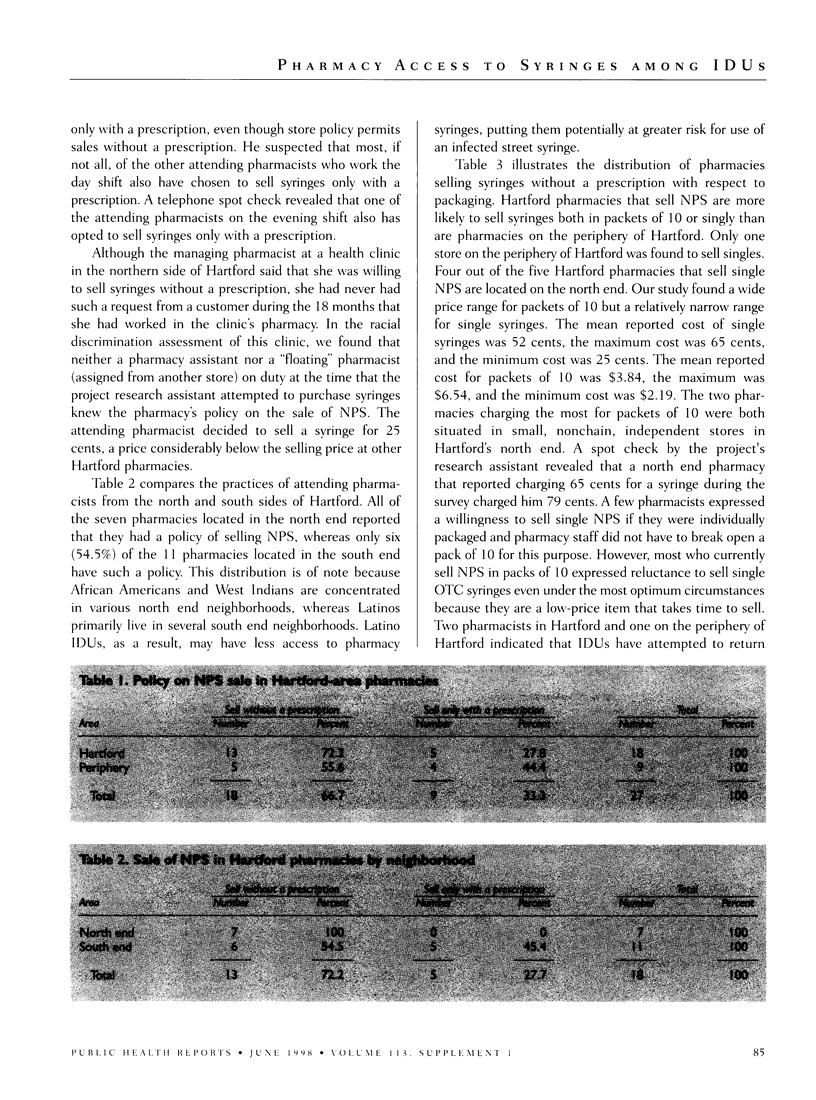
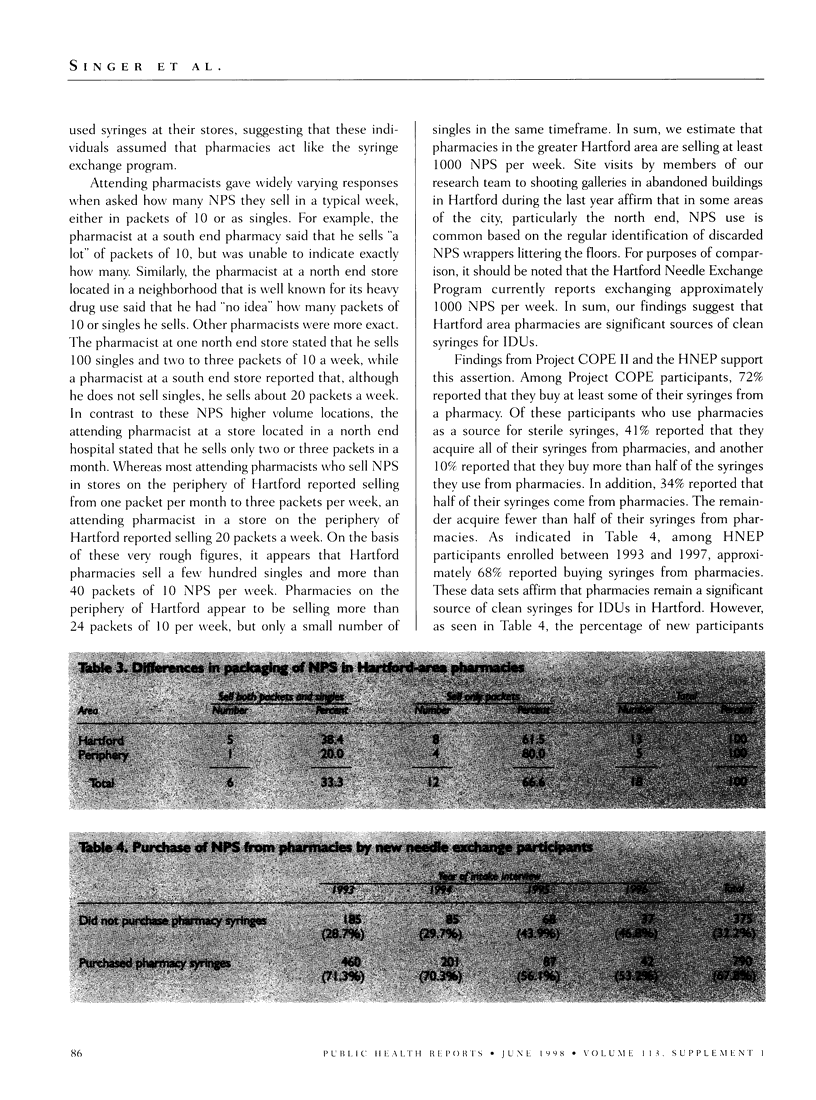
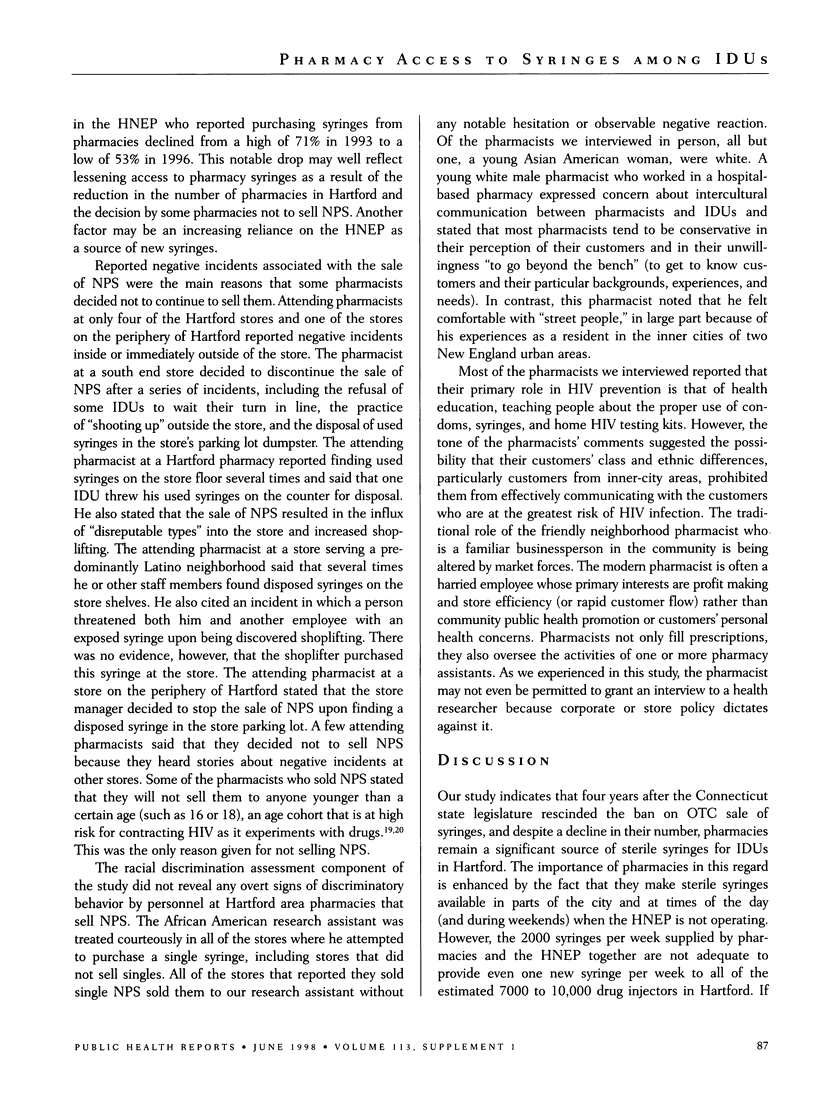
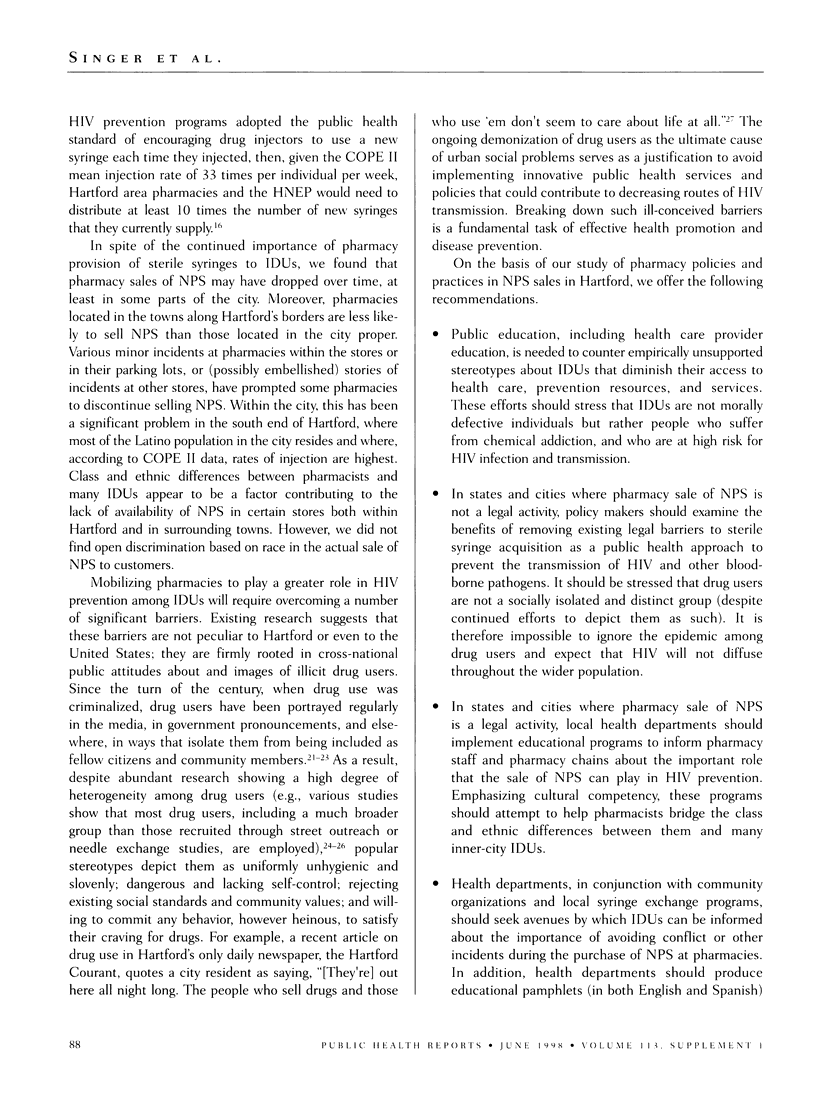
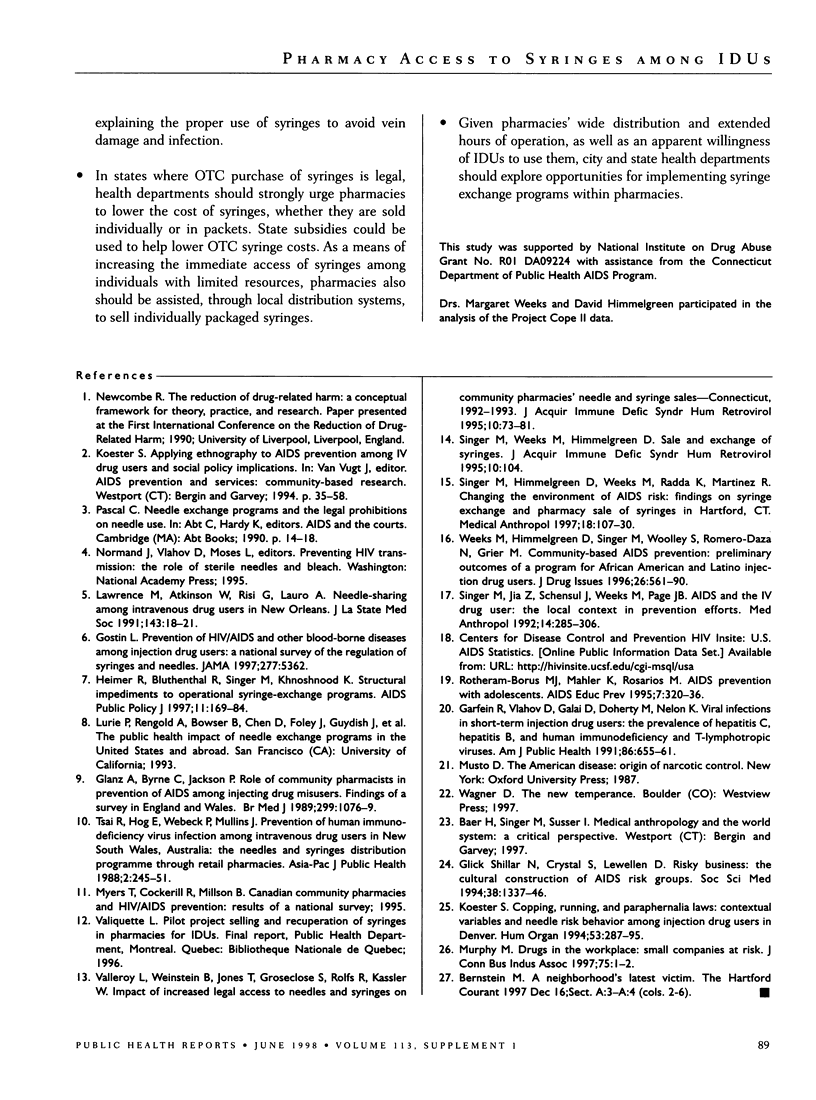
Selected References
These references are in PubMed. This may not be the complete list of references from this article.
- Garfein R. S., Vlahov D., Galai N., Doherty M. C., Nelson K. E. Viral infections in short-term injection drug users: the prevalence of the hepatitis C, hepatitis B, human immunodeficiency, and human T-lymphotropic viruses. Am J Public Health. 1996 May;86(5):655–661. doi: 10.2105/ajph.86.5.655. [DOI] [PMC free article] [PubMed] [Google Scholar]
- Glanz A., Byrne C., Jackson P. Role of community pharmacies in prevention of AIDS among injecting drug misusers: findings of a survey in England and Wales. BMJ. 1989 Oct 28;299(6707):1076–1079. doi: 10.1136/bmj.299.6707.1076. [DOI] [PMC free article] [PubMed] [Google Scholar]
- Heimer R., Bluthenthal R. N., Singer M., Khoshnood K. Structural impediments to operational syringe-exchange programs. AIDS Public Policy J. 1996 Winter;11(4):169–184. [PubMed] [Google Scholar]
- Lawrence D. W., Lawrence M. D., Atkinson W. L., Risi G. F., Lauro A. J. Needle-sharing among intravenous drug users in New Orleans. J La State Med Soc. 1991 Jun;143(6):18–21. [PubMed] [Google Scholar]
- Rotheram-Borus M. J., Mahler K. A., Rosario M. AIDS prevention with adolescents. AIDS Educ Prev. 1995 Aug;7(4):320–336. [PubMed] [Google Scholar]
- Schiller N. G., Crystal S., Lewellen D. Risky business: the cultural construction of AIDS risk groups. Soc Sci Med. 1994 May;38(10):1337–1346. doi: 10.1016/0277-9536(94)90272-0. [DOI] [PubMed] [Google Scholar]
- Singer M., Himmelgreen D., Weeks M. R., Radda K. E., Martinez R. Changing the environment of AIDS risk: findings on syringe exchange and pharmacy sales of syringes in Hartford, CT. Med Anthropol. 1997 Dec;18(1):107–130. doi: 10.1080/01459740.1997.9966152. [DOI] [PubMed] [Google Scholar]
- Singer M., Jia Z., Schensul J. J., Weeks M., Page J. B. AIDS and the i.v. drug user: the local context in prevention efforts. Med Anthropol. 1992 May;14(2-4):285–306. doi: 10.1080/01459740.1992.9966075. [DOI] [PubMed] [Google Scholar]
- Singer M., Weeks M. R., Himmelgreen D. Sale and exchange of syringes. J Acquir Immune Defic Syndr Hum Retrovirol. 1995 Sep 1;10(1):104–104. doi: 10.1097/00042560-199509000-00015. [DOI] [PubMed] [Google Scholar]
- Tsai R., Goh E. H., Webeck P., Mullins J. Prevention of human immunodeficiency virus infection among intravenous drug users in New South Wales, Australia: the needles and syringes distribution programme through retail pharmacies. Asia Pac J Public Health. 1988;2(4):245–251. doi: 10.1177/101053958800200408. [DOI] [PubMed] [Google Scholar]
- Valleroy L. A., Weinstein B., Jones T. S., Groseclose S. L., Rolfs R. T., Kassler W. J. Impact of increased legal access to needles and syringes on community pharmacies' needle and syringe sales--Connecticut, 1992-1993. J Acquir Immune Defic Syndr Hum Retrovirol. 1995 Sep 1;10(1):73–81. [PubMed] [Google Scholar]


